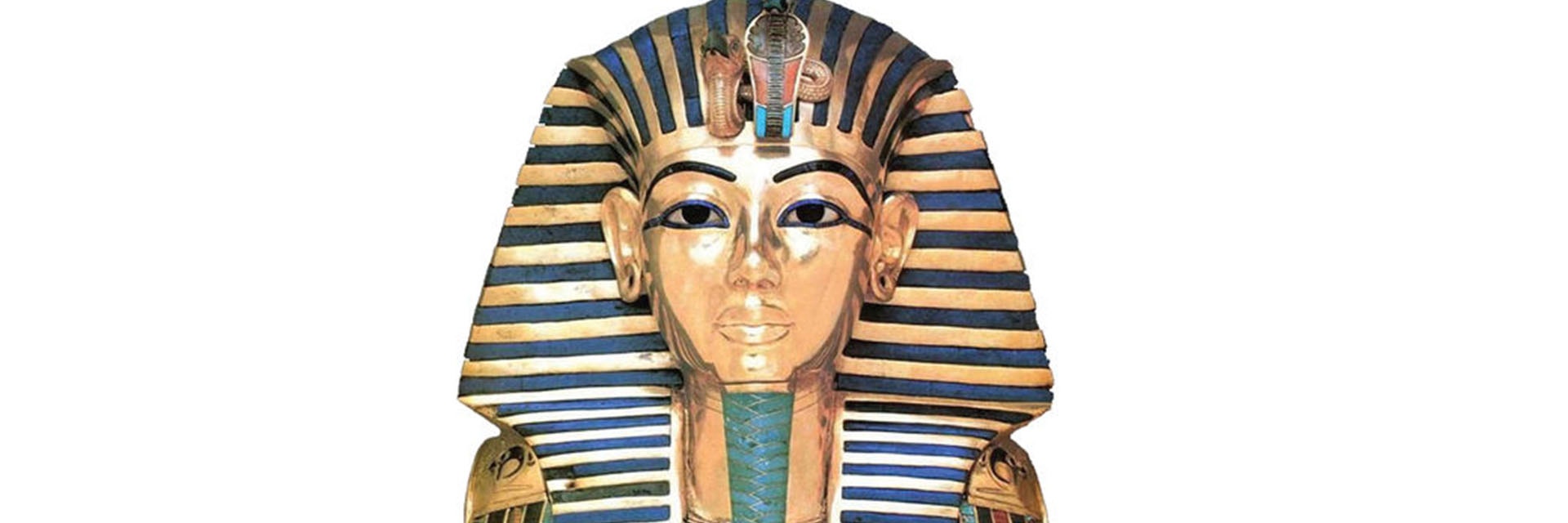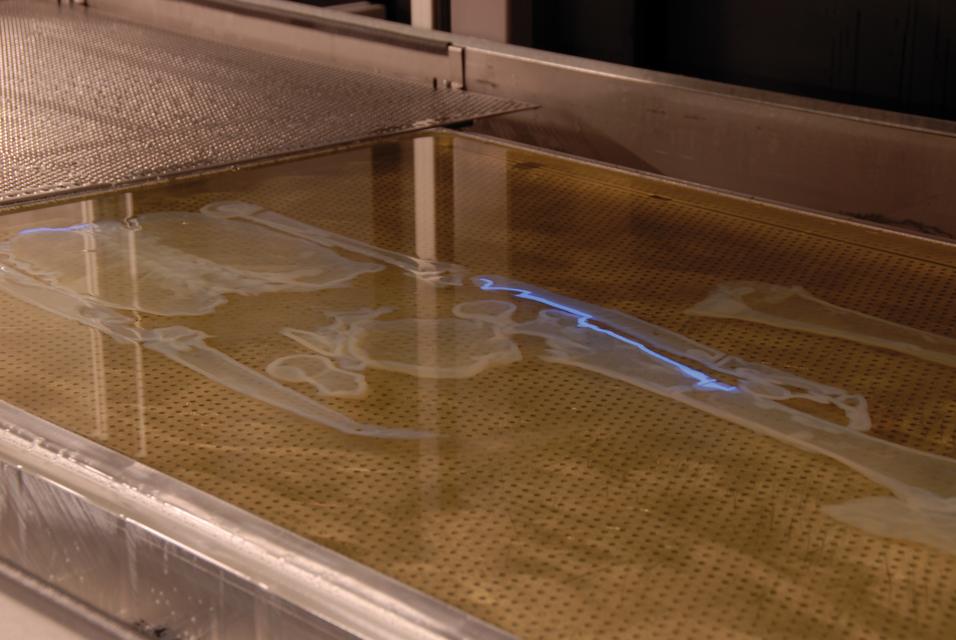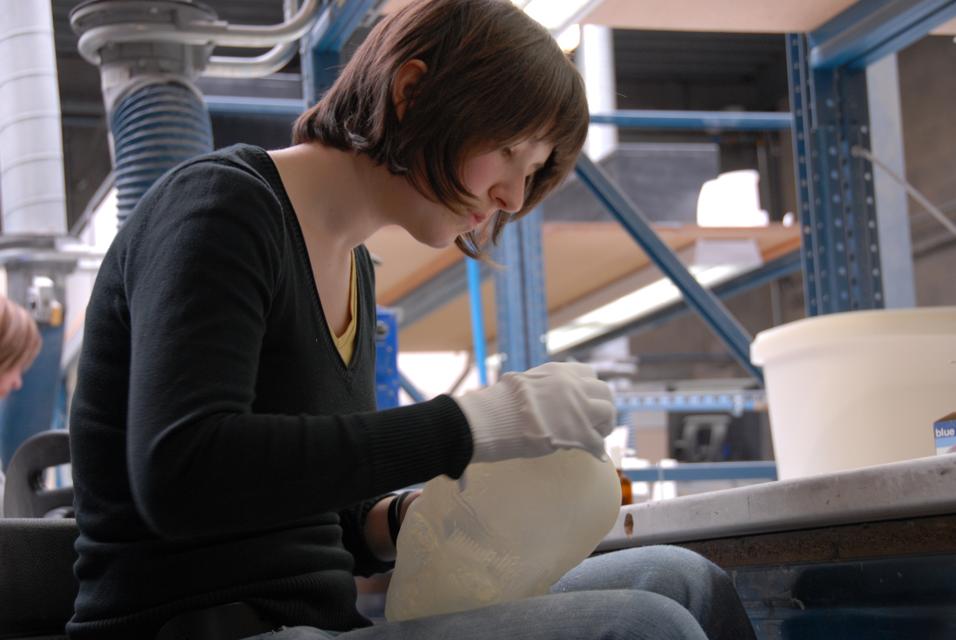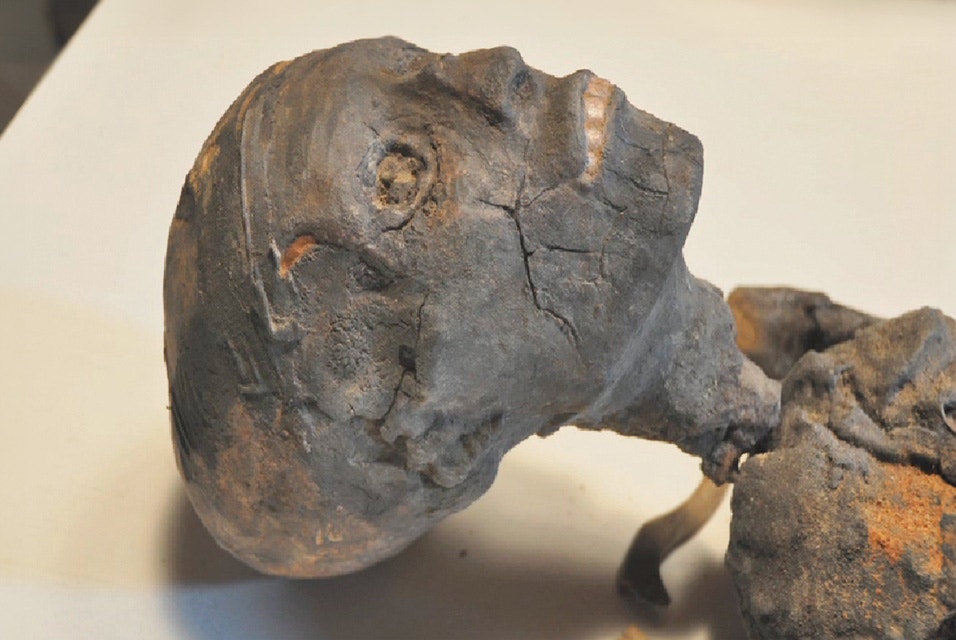CASE STUDY
King Tut Revealed through an Accurate 3D Replica

The enduring fascination of Tutankhamun is undeniable. Now thanks to the efforts of Gary Staab and the Materialise team, we can finally see the King behind the famous mask with our own eyes!
Of all ancient Egyptian mummies discovered over the past centuries, none has exercised a more enduring fascination than Tutankhamun’s. Part of the allure stems from undeniable curiosity. What does King Tut look like beneath his famous ceremonial burial mask? Thanks to the efforts of Gary Staab and the Materialise team, it is now possible to find this out with your own eyes!
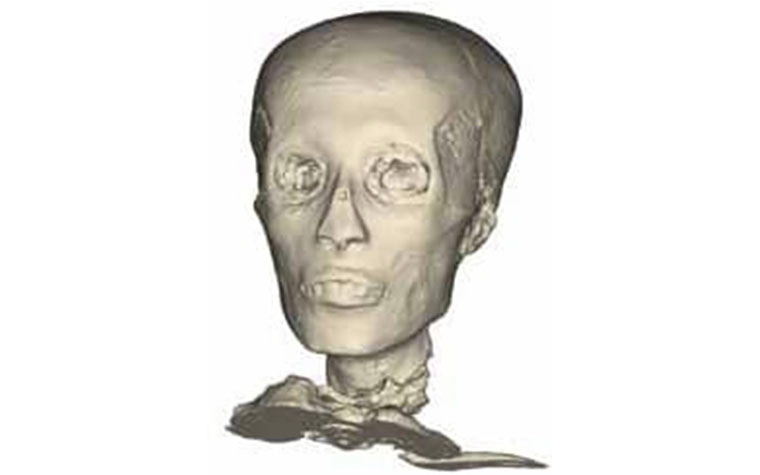

Art and technology join forces to unveil the mystery
When model-maker Gary Staab of Staab Studios was commissioned by National Geographic and Arts and Exhibitions to create a replica of King Tut’s mummy for display at the Discovery Times Square exhibition, he turned to Materialise. A specialist in recreating highly accurate 3D models, past and present, Gary knew Materialise had all the tools to convert scanned images of the mummy into a virtual 3D model, and further turn this into a physical 3D-printed object on which he could start working his magic. It would be the perfect non-destructive method for revealing the physique of the long-dead king. The team at Materialise’s headquarters in Belgium was pleased to collaborate and work on this amazing project.
The process began by importing CT scans into Materialise Mimics Innovation Suite. The engineering services team in Belgium rapidly converted the scans into a 3D digital replica of the mummy. Mimics’ incredible accuracy ensured that the greatest possible detail was preserved. The lines, curves, and contours of Tut’s skeletal structure would be translated into a model just as it is to date, under the mask and bandages.
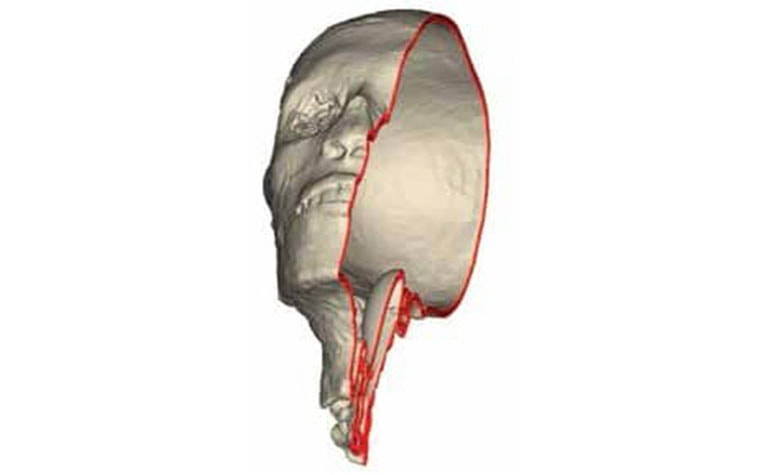

Model production: keeping it in the (Materialise) family
Once the digital model was created, the Materialise engineering services team turned to their in-house developed 3-matic software for hollowing. Hollowing is an important step to make the model lighter, reduce the amount of resin needed to build the 3D model, and decrease the build time. This was critical given the time constraints of the project.
The next step was to fix the model so it could be printed using 3D printing technology. By using Materialise Magics software for file preparation, they ensured a “watertight” file, which is crucial in this type of printing project. Furthermore, the printer performing the build was the company’s patented Mammoth stereolithography machine.
The final phase of the project — the physical reproduction of the computer model — was facilitated by the use of Materialise’s automatic support generation software, e-Stage. The stereolithography process cures a photosensitive resin with a laser that traces a part’s cross-sectional geometry layer by layer. This resin is in liquid form, requiring the part to be “supported” while it’s being built. e-Stage supplies this necessary support as it is designed not only to automatically create the support structure but also to do so in such a way that it can be easily removed once the model is completed. This stage, known as post-processing, is much easier thanks to the support’s small contact points.
The real Tut revealed
Now the model was ready for Staab’s characteristic artistry. It was shipped overseas to Staab Studio in Missouri, where Gary Staab added the appropriate detail, color, and texture. The finished model is virtually a “cloned” version of King Tutankhamun’s remains, as close to the original as technologically possible. Experts familiar with the real mummy state: “You can’t tell the difference.”
Share on:
This case study in a few words
Art & fashion
Magics
Mimics Innovation Suite
Stereolithography
To recreate an accurate, lifesize 3D-printed replica of an ancient mummy
How we helped
Accelerate your journey to personalization at scale with the most robust software platform for analysis, planning, and design.
Improve production efficiency, automate repetitive tasks, and optimize print success rates with industry-leading data and build preparation software.
